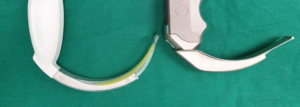Helicopter Emergency Medical Services (HEMS) provide rapid transport for critically ill and injured patients, often operating under extreme environmental and psychological conditions. The nature of their work—long shifts, unpredictable call volumes, high-stakes decision-making, and exposure to harsh flight environments—places significant stress on flight crews. These stressors contribute to chronic fatigue, which can impair cognitive and physical performance, increasing the risk of operational errors, accidents, and long-term health issues.
This article delves into the physiological and psychological stressors unique to helicopter medical evacuations, how they affect the body and mind, and the evidence-based strategies available to mitigate fatigue and improve crew well-being. Additionally, it incorporates Federal Aviation Administration (FAA) regulations regarding flight time limitations and rest requirements for HEMS operations
The Physiological Stressors of Flight
Noise Exposure and Its Long-Term Effects
The cockpit of a helicopter is an inherently noisy environment, with sound levels often exceeding 90–100 decibels, even with headsets and ear protection.[1] Prolonged exposure to high-decibel environments can lead to:
- Permanent hearing loss,
- Increased cortisol levels due to heightened stress responses,[2]
- Sleep disturbances and chronic fatigue,[3]
- Reduced situational awareness and cognitive impairment.[4]
Temperature Extremes and Thermal Stress
Unlike commercial airliners with climate-controlled cabins, helicopter cockpits and medical cabins often experience drastic temperature fluctuations. Pilots and medical crews may be exposed to freezing temperatures during high-altitude flights or extreme heat while operating in desert environments. Both extremes impose additional physical stress:
- Cold exposure can impair dexterity, decision-making, and increase fatigue due to shivering and metabolic demands.[5]
- Heat exposure leads to dehydration, increased heart rate, and reduced mental performance.[6] Studies indicate that even a 2% loss in body fluids due to dehydration can cause a 10–20% decrease in cognitive function.[7]
Vibration and Musculoskeletal Strain
Helicopters generate continuous low-frequency vibrations, which can have cumulative effects on the body. Chronic exposure to these vibrations has been linked to:
- Increased fatigue and musculoskeletal discomfort,[8]
- Lower back pain and degenerative spinal issues due to postural stress,[9]
- Decreased hand-eye coordination and fine motor skill impairment.[10]
The Psychological Burden of HEMS Operations
The Cognitive Load of High-Stakes Decision-Making
HEMS crews often make rapid, high-stakes decisions under immense pressure, including:
- Whether to attempt intubation in a moving aircraft,
- Assessing the risk of landing in adverse conditions,
- Prioritizing multiple critically ill patients in mass-casualty incidents.
Studies show that excessive cognitive load impairs short-term memory, decision-making accuracy, and reaction time.[11] Sleep deprivation exacerbates these effects, increasing the risk of cognitive failures by 40%.[12]
Secondary Trauma and Compassion Fatigue
Regular exposure to severe trauma and loss of life can lead to secondary traumatic stress (STS) and compassion fatigue, both of which are precursors to burnout. Research indicates that:
- 58% of HEMS personnel report symptoms of PTSD due to repeated exposure to traumatic events,[13]
- Emotional detachment and decreased empathy develop as coping mechanisms, negatively impacting patient care,[14]
- Suicide rates among air medical personnel are higher than those in general aviation and other medical specialties.[15]
Circadian Rhythm Disruptions and Shift Work Fatigue
HEMS crews often work 12–24-hour shifts, requiring alertness at night when the body’s natural circadian rhythm is set for rest. Disrupting the sleep-wake cycle contributes to:
- Increased sleep debt: Chronic sleep deprivation is associated with a 400% increase in medical errors among healthcare professionals working night shifts.[16]
- Decreased alertness: Studies show that after 18–20 hours of wakefulness, cognitive impairment is equivalent to having a blood alcohol concentration (BAC) of 0.05%.[17]
- Increased risk of cardiovascular disease and metabolic disorders, including obesity and insulin resistance, due to irregular eating and sleep patterns.[18]
FAA Flight Time Limitations and Rest Requirements
The FAA’s regulations for HEMS operations are outlined in 14 CFR Part 135, Subpart F.[19] Key provisions include:
- Flight Time Limitations:
- A maximum of 8 hours of flight time is permitted within any 24 consecutive hours for a flight crew consisting of one pilot.
- For a flight crew consisting of two pilots, the maximum flight time extends to 10 hours within the same period.
- Rest Requirements:
- Each flight crewmember must receive at least 8 consecutive hours of rest during any 24 consecutive hour period of a HEMS assignment.
- If a crewmember exceeds daily flight time limitations, they must have a rest period before the next duty assignment of at least:
- 11 consecutive hours if exceeded by up to 30 minutes,
- 12 consecutive hours if exceeded by 30–60 minutes,
- 16 consecutive hours if exceeded by more than 60 minutes.
- Duty Period Limitations:
- A HEMS assignment may not exceed 72 consecutive hours at the hospital.
- An adequate place of rest must be provided at, or in close proximity to, the hospital where the HEMS assignment is performed.
- No certificate holder may assign additional duties to a flight crew member during a HEMS assignment.
Conclusion
Helicopter medical crews operate under extreme physiological and psychological stressors, significantly impacting their health, performance, and well-being. Chronic fatigue, shift work disruption, exposure to trauma, and environmental hazards all contribute to a dangerous cycle of burnout and decreased cognitive function.
Adhering to FAA flight regulations, implementing fatigue risk management programs, and offering mental health support are crucial strategies to enhance crew safety and well-being. Recognizing these issues is essential in fostering a safer, more sustainable work environment for HEMS professionals.
References
- Environmental causes of aviation stress. Wikipedia. Retrieved from https://en.wikipedia.org/wiki/Environmental_causes_of_aviation_stress
- Stansfeld S, Matheson MP. Noise pollution: Non-auditory effects on health. British Medical Bulletin. 2003;68(1):243-257.
- Basner M, McGuire S. Effects of night-time aircraft noise exposure on sleep. Noise & Health. 2018;20(98):1-9.
- Goksel O, et al. Cognitive impairment due to high-noise aviation environments. Aviation Psychology and Applied Human Factors. 2017;7(3):171-180.
- Mäkinen TM. Human cold exposure, adaptation, and performance in extreme environments. Scandinavian Journal of Work, Environment & Health. 2007;33(1):1-13.
- Pilcher JJ, Nadler E, Busch C. Effects of heat stress on cognitive function. Military Medicine. 2002;167(12):1024-1029.
- Lieberman HR, et al. Mild dehydration impairs cognitive performance. Journal of Nutrition. 2012;142(5):821-825.
- Griffin MJ. Effects of vibration on human fatigue and performance. Occupational Medicine. 2001;51(5):341-356.
- Bovenzi M, et al. Low back pain in helicopter pilots: A review. Aviation, Space, and Environmental Medicine. 2008;79(3):262-271.
- ResearchGate. The effects of whole-body vibration on manual dexterity. 2019.
- Pilot Institute. Psychological stressors in aviation. Retrieved from https://pilotinstitute.com/the-psychological-aspects-of-flying
- Dinges DF. The effects of fatigue on decision-making. Human Factors Journal. 2005;47(1):1-17.
- PTSD prevalence among air medical personnel. Vanderbilt Health Discoveries. 2023.
- Burnout among emergency medical professionals. Journal of EMS Medicine. 2022.
- Suicide risk among HEMS workers. Aerospace Medicine and Human Performance Journal. 2021.
- Shift work fatigue in emergency medicine. PubMed. Retrieved from https://pubmed.ncbi.nlm.nih.gov/31957600
- Dawson D, Reid K. Fatigue and alcohol equivalency. Nature. 1997;388:235.
- Circadian misalignment and metabolic disease. Current Biology. 2017;27(12):321-330.
- Fatigue risk assessment for HEMS crews. ResearchGate. 2023.




